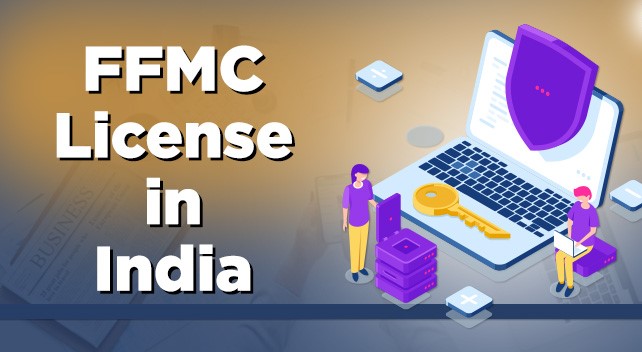When considering Private Limited Company Registration in India, one of the most important decisions you will make is selecting the registered office for your business. The registered office is the official address where your company will receive legal correspondence, notices from government authorities, and other important communication. In this blog, we will guide you through the importance of choosing the right registered office and how it plays a crucial role in the Pvt Ltd Company Registration in India process.
Understanding the Importance of a Registered Office
A registered office is a mandatory requirement during the Company Registration in India process. This address will appear on official documents like incorporation certificates, tax filings, and contracts. Moreover, this address is where you will receive all legal notices and communication from government authorities such as the Registrar of Companies (RoC), tax department, and other regulatory bodies.
The address of your registered office will be published on the Ministry of Corporate Affairs (MCA) website, making it publicly accessible. Therefore, selecting the right location for your Pvt Ltd Company Registration in India is not just a matter of convenience but of compliance.
Key Considerations When Choosing Your Registered Office Address
- Location for Legal and Tax Purposes The registered office address determines the jurisdiction of your company’s legal matters. This means that your company will fall under the legal and tax rules of the state in which your registered office is located. Therefore, it is crucial to choose a location that aligns with your business activities and operations.
- Proximity to Authorities and Professional Services Choose a location that is easily accessible to government offices, legal consultants, and accountants. This can make handling official paperwork, such as GST registration, easier and faster.
- Business Operations The registered office does not necessarily have to be the place where your business operates, but it must be a physical address. Many startups prefer to use their business headquarters or even a co-working space as the registered office, provided it meets legal requirements. This is particularly important if you are wondering how to register a startup company in India while minimizing costs.
- Compliant with Local Zoning Laws The address of your registered office must be within the legal framework of local zoning laws. Make sure the area is approved for commercial purposes, as some residential zones may have restrictions against operating a business.
- Using Virtual Office Services In cases where you do not wish to use your home or office as a registered address, you can opt for a virtual office. This is a legitimate service offered by providers that allows you to register your company at a prestigious address in major cities, while you operate your business elsewhere. Many of these services provide mail forwarding and phone answering services, which can help maintain professionalism while adhering to the rules of Company Registration in India.
The Process of Registering Your Company Online
With the advancement of technology, the process of Company Registration online in India has become much easier. You can complete the entire registration process from the comfort of your home or office. Here are the key steps to register a company in India:
- Obtain Digital Signature Certificate (DSC) All directors must obtain a Digital Signature Certificate to sign electronic documents during Pvt Ltd Company Registration in India.
- Apply for Director Identification Number (DIN) You will need a Director Identification Number for each director of your company.
- Choose a Company Name Choose a unique name for your company, keeping in mind the MCA guidelines for naming a company.
- Draft the Memorandum and Articles of Association (MOA and AOA) These documents define the company’s structure, its objectives, and the rules governing its operations.
- File Forms with the Registrar of Companies (RoC) Submit the necessary forms, including Form SPICe+, for Private Limited Company Registration in India. This can be done through the Ministry of Corporate Affairs (MCA) website.
- Receive Certificate of Incorporation Once your documents are verified, you will receive a Certificate of Incorporation, confirming that your company is officially registered.
How Your Registered Office Fits into the Online Registration Process
During company registration online in India, you will be asked to provide the registered office address as part of your application. The address must be valid, with proper documents to verify its authenticity. If you’re using a virtual office service or a co-working space, ensure that the service provider can give you the necessary proof of address.
Common Mistakes to Avoid When Choosing Your Registered Office
- Not Checking for Zoning Compliance
Ensure that your selected location is allowed to be used for business purposes. - Not Having a Physical Address
Virtual addresses should be reliable, with services offering proper mail forwarding and other legal requirements. - Not Keeping the Address Updated
If you change your office location after Company Registration in India, you must update the address with the RoC within 30 days to avoid penalties. - Choosing an Inconvenient Location
A remote or hard-to-reach address could lead to delays in receiving important documents or communications, which can harm your business’s credibility.
Conclusion
Choosing the right registered office address is an essential part of the Pvt Ltd Company Registration in India process. It impacts your legal standing, tax obligations, and overall business operations. Whether you’re looking for a registered office in a bustling metropolitan area or opting for a virtual office setup, make sure the location complies with all the regulations for Company Registration in India.
By understanding these factors, you’ll be well on your way to making informed decisions and ensuring your company registration online in India is smooth and successful. With a bit of planning and research, you’ll secure an address that fits your business’s needs and supports its growth for the long term.











